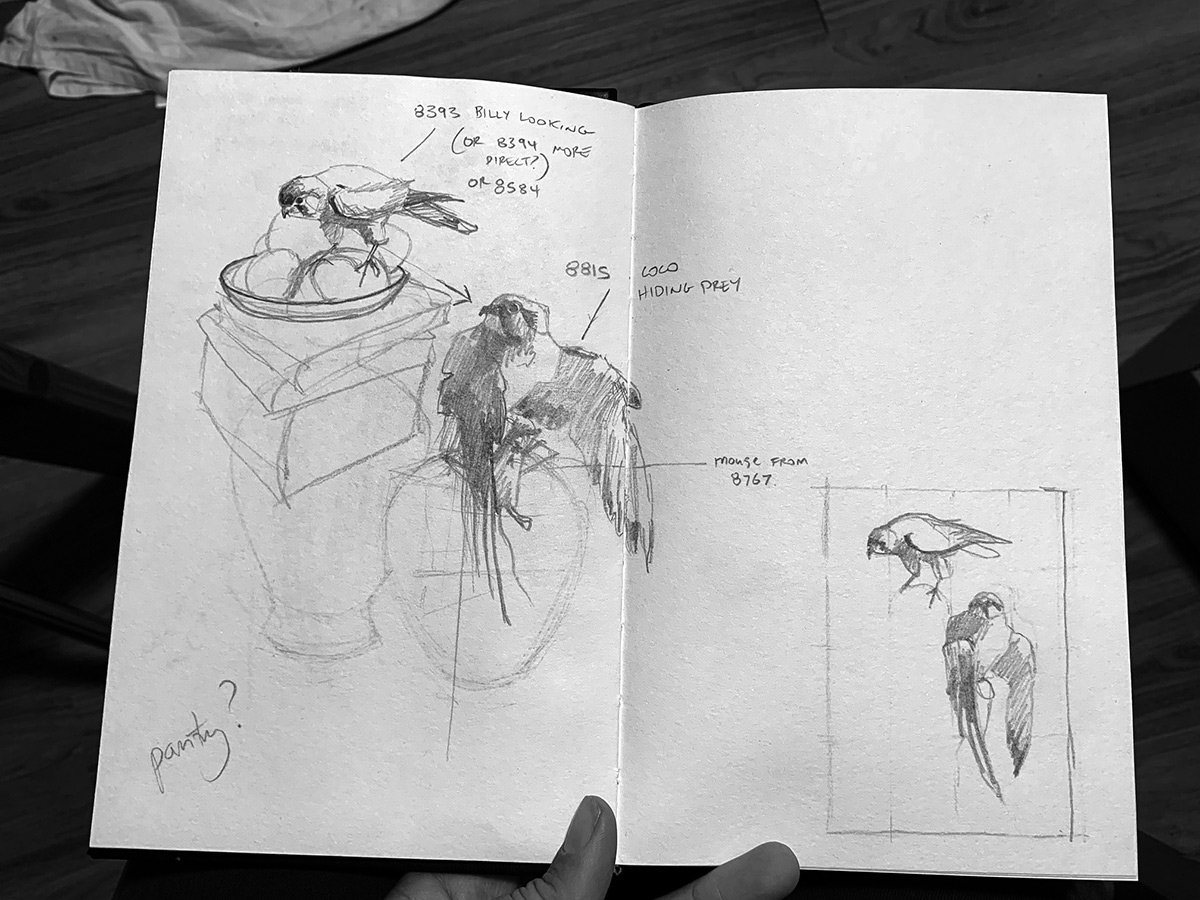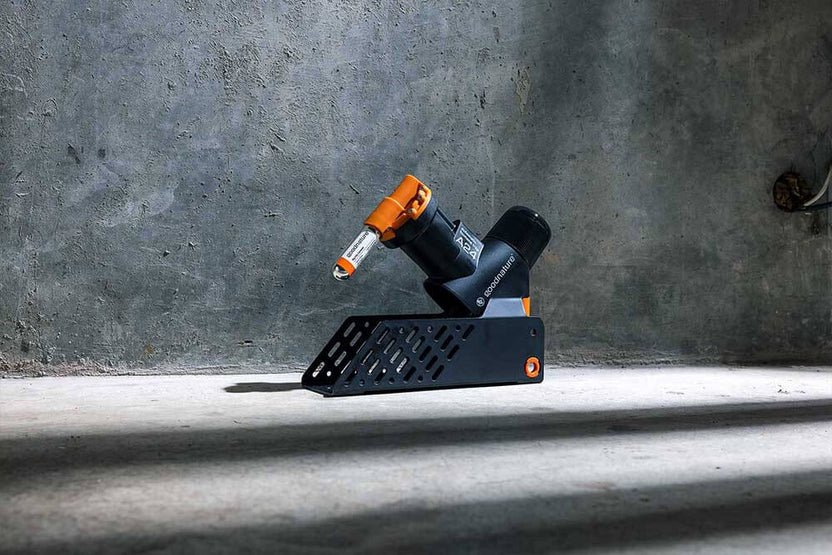Behind the painting "Preserve and Protect": a story of painting Australian bird of prey
In my work as an Australian bird artist, I have the incredible opportunity to meet different Australian birds up close, to get to know their personalities and individual characters. And let me tell you, birds have such vast and varied personalities! My aim as a bird artist is to try to capture these personalities and convey them to you as the viewer, through my bird paintings.
But there’s one particular bird painting of mine that I want to share a little more insight on. The bird painting in question is entitled “Preserve and Protect” and it depicts two Australian bird of prey with very special stories.
“preserve and protect” oil on canvas by Anne Smerdon
Here’s the backstory behind this Australian bird of prey painting:
Back in 2021, there was a devastating mouse plague in NSW Australia. It destroyed crops and caused havoc among local residents. Even in my local area (just over the border from NSW) we had a dramatic increase in rat and mice numbers and it was becoming a real problem. But the bigger problem, as I saw it, was what we humans were going to do about it.
You see, in Australia the main way we deal with mice and rats is through rat baits known as second-generation anticoagulant rodenticides (SGARs). But it’s well researched that SGARs lead to secondary poisonings of non-target species such as fish, reptiles and Australian bird of prey who ironically play a vital role in rodent control. SGARs are banned in many other countries and are currently banned from large-scale agricultural use in Australia. However they are readily available from most home-improvement stores for domestic use.
I knew that people would use suitable alternatives to SGARs if they knew they harmed native animals (and I’ve found some great alternatives! More on that below). The problem was that people just weren’t aware of how harmful these readily-available baits were.
So I embarked on painting a collection to raise awareness about SGARs and the little-known consequences of their use. I decided to paint Australian bird of prey in domestic settings, with ornate vases and home-grown-produce, to show the viewer the value and vital importance of each and every Australian bird. I even filmed my own experience trying to remove rats from our house.
But…. finding raptors to photograph up close was the challenge! I put my feelers out to my bird network and got in touch with some wildlife carers who specialised in Australian raptors.
Finding Australian bird of prey to photograph and paint:
I got in contact with a lovely wildlife carer who had two Australian kestrels in care at that time. I drove up and met her and the two birds, Billy and Coco.
Billy, the Australian Kestrel sitting all fluffed and content
About Billy:
Billy, an adult male Kestrel, was found by a mechanic, wedged between the radiator of a car. He must have been sometime beforehand and was surviving off the moths and insects caught behind the headlights of the car. He was passed on to a specialist wildlife career and although he had a significant head wound, was extremely low in weight and lost one eye, he has since made a great recovery. Because of the nature of his injury, he is vulnerable to larger birds of prey and cannot be released back into the wild. He will live out his days as a permanent resident in the wildlife carer’s care.
While I was there photographing Billy, he seemed so content and sweet. He slowly ate his defrosted mouse, taking his time as if he didn’t have a care in the world. To my delight, he even fluffed up his feathers with contentment, something very rarely seen when a wild bird is in the presence of a predator such as a human!
Coco, hiding her mouse from me.
About Coco:
Coco was much younger than Billy and was boisterous and energetic. She had lost her tail, likely from a fall during the storm that dislodged her from her nest. She was also insatiable. Even though she ate two mice in the time I was there, she kept calling out for more and would often try to pinch Billy’s mouse from him. As I approached to photograph her, she hid her prey with her wings, blocking my view of the partially frozen mouse at her feet, as if to say “don’t even look at it! It’s mine!” I thought it was a fitting illustration for how we as humans need to value and protect our Australian bird of prey with equal enthusiasm and I just knew I had to paint her protective pose. But the question was, how?
Back in the studio:
I took my photos of Billy and Coco and started designing in my sketchbook, to try to find a composition that was aesthetically pleasing and told the story I wanted to convey.
I decided I wanted to have Billy higher and slightly behind Coco, so that she was hiding her prey from him, with one eye on him and one eye on the viewer. This meant finding objects that I could stack to create the height difference between the two birds. Our home grown oranges did the trick! As well as some mandarine’s from my fathers garden. And to top it all off, a jar of dehydrated home-grown oranges that I had preserved the month before. What a fitting symbol for preserving our native animals!
And that is how my bird painting “preserve and protect” came together and started my whole body of work based on Australian bird of prey. All from the 2021 mouse plague. It just goes to show that absolutely anything can inspire an artwork!
I hope that in reading this, you too may have learnt something about SGARs. Remember, one simple act by us can have huge consequences for others, particularly our animal species, which I believe we have an obligation to nurture and protect.
UPDATE: Since starting that body of work, I have stumbled across the BEST solution to rodent control! And it’s a product I think every single person should have on their property! It’s the A24 trap by Goodnature. Designed by ecologists, scientists, designers and developers, it doesn’t use any nasty baits. It’s automatic so you can set and forget (plus it connects to your device and alerts you when a kill is made and when refills are required). It kills rodents instantly, meeting the highest international standards for a humane kill. Plus, once killed, the rodent can still be consumed by predators. Goodnature have a wealth of information on how to protect pets and protect native species from using the trap (you can even chat to one of their ecologists about your unique situation). For pet owners, I recommend purchasing the trap with the blocker to keep your pets safe, follow Goodnature’s guides on safe trapping practices and monitor your pets around the trap before making the trap live. I have my A24 set up just outside of my bird’s aviary with a shield so native birds can’t get into it. The trap killed a rat on the first night I made the trap live!
Anne x
Image source: Goodnature
PS If you want more insights into my creative process or you’d like to be the first to know when I launch new paintings, join my collectors club Newsletter:





